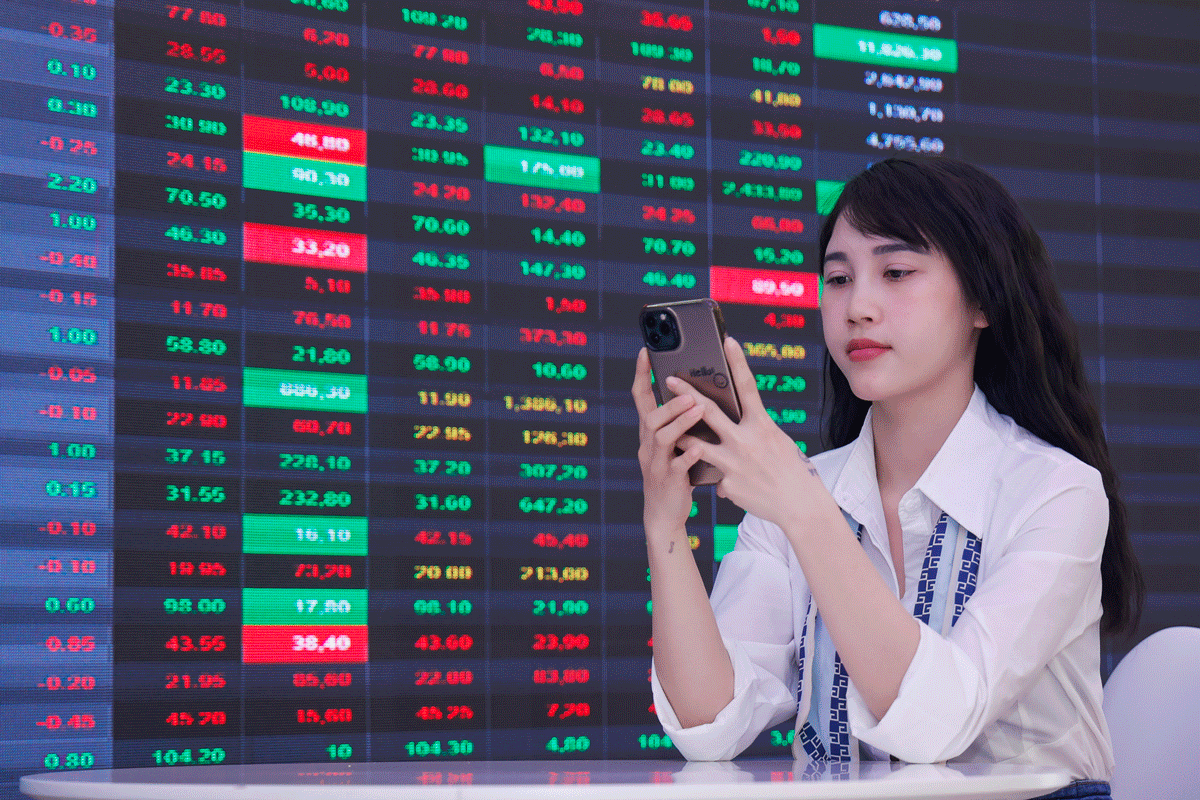
The domestic stock market fluctuated on March 11-15 with conflicting news. However, cash flow is still headed for stocks. Last week, liquidity improved with the average trading value of VND30.135 trillion each session on three bourses, an increase of 15.7 percent over the week before.
At the week’s first trading session on March 11, the information that the State Bank of Vietnam (SBV) issued treasury bonds to regulate the dong/dollar exchange rate after four months of interruption triggered investors’ negative sentiments, resulting in the 12 point decrease.
Analysts said in the past, every time SBV bids for treasury bills to withdraw money from circulation, it affects securities investors’ sentiment. However, the impact from small withdrawal campaigns (less than VND100 trillion) was minimal.
Over the last five trading sessions, SBV withdrew a total of VND75 trillion through 28-day treasury bills with interest rate hovering around 1.4 percent per annum. It is still unclear how much money SBV will withdraw this week.
Withdrawing money from circulation and pumping more money into circulation are normal operations by the central bank.
The latest withdrawals were made in the context of the unexpected appreciation of the greenback in the last two weeks. This happened right at the beginning of the year, when the dollar supply was abundant.
The dong/dollar exchange rate in the black market on March 11 reached a historic peak of VND25,700 per dollar. The dollar price quoted by commercial banks hit its peak on March 15 at VND24,910 per dollar.
The fears of dong depreciation, SJC gold price hike, and the SBV’s possible move of withdrawing more money were discussed on investors’ forums and reflected in investors’ strong sales at the first trading session of the new week.
However, the demand for shares is high at this moment.
A representative of a securities company said cash is going to flow into the stock market amid low deposit interest rates, just 1.7-4.7 percent per annum and banks’ abundant liquidity. The overnight interest rate is just below one percent per annum.
Analysts said the strong cash flow has helped push the VN-Index up. The demand on March 12 helped the VN-Index increase by 9 points.
The increasing trend of bank shares helped the closing VN-Index rise by 22 points on March 13 amid information about the organization of a conference on deploying monetary policy in 2024.
However, after the conference between the government and large corporations (mostly real estate firms), the market witnessed the decrease of 6 points on March 14 and the decrease of another point at the last session of last week.
Finishing the March 11-15 week, the VN-Index increased by 1.3 percent to 1,263.78 points, while the HNX-Index rose by 1.4 percent to 239.5 points and UpCom-Index 0.2 percent to 91.35 points.
The shares that had positive influences on the stock market last week included oil and gas, rubber and technology, such as GAS (+ 3.5 percent), GVR (+ 19.3 percent) and FPT (+5.5 percent).
Meanwhile, other bluechips saw prices decrease, such as Vietcombank (- 1.2 percent), VPBank (-1.8 percent) and Sabeco (-3.3 percent).
Foreign investors continued selling more than buying with the net sale of VND2.6 trillion on the HCM City bourse (HOSE), higher than the VND981 billion the week before, and VND2.85 trillion on all three bourses.
New week: US FED creates market heat
Dinh Quang Hinh from VnDirect Securities said this will be an important week as the US FED plans to have a meeting on March 19-20. The VN-Index may ‘test’ the resistance 1,280 point area again.
If the FED’s scenario is not too ‘hawkish’ compared with market expectations (starting interest rate cuts from the second quarter 2024 and having at least three cutting campaigns in 2024), investors will have every reason to expect positive response from the global financial market.
The market did not have overly negative responses to SBV’s move on issuing treasury bills because of many positive factors that supported the market – strong economic recovery and good news about listed companies’ business performance in the first quarter of the year.
Manh Ha